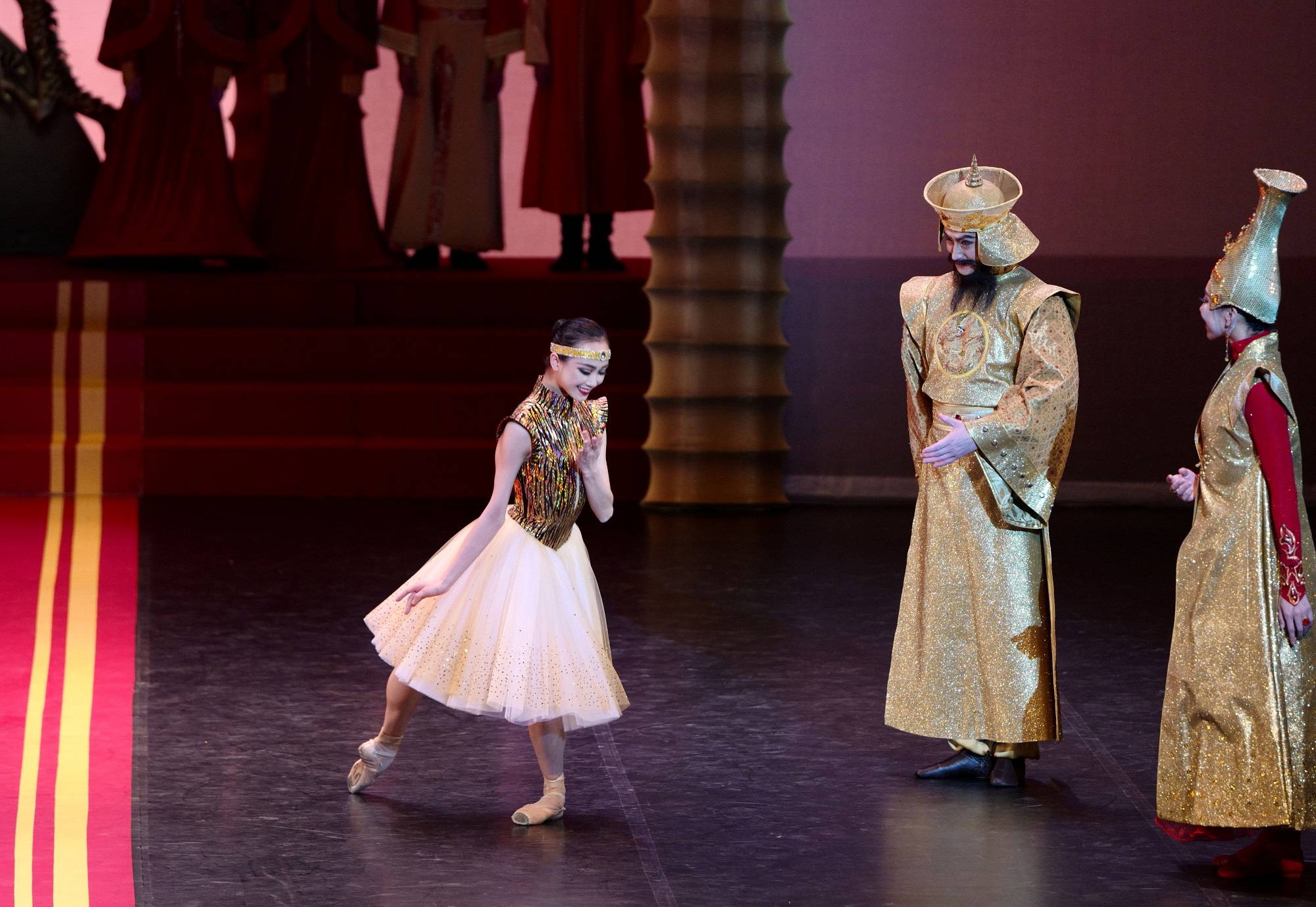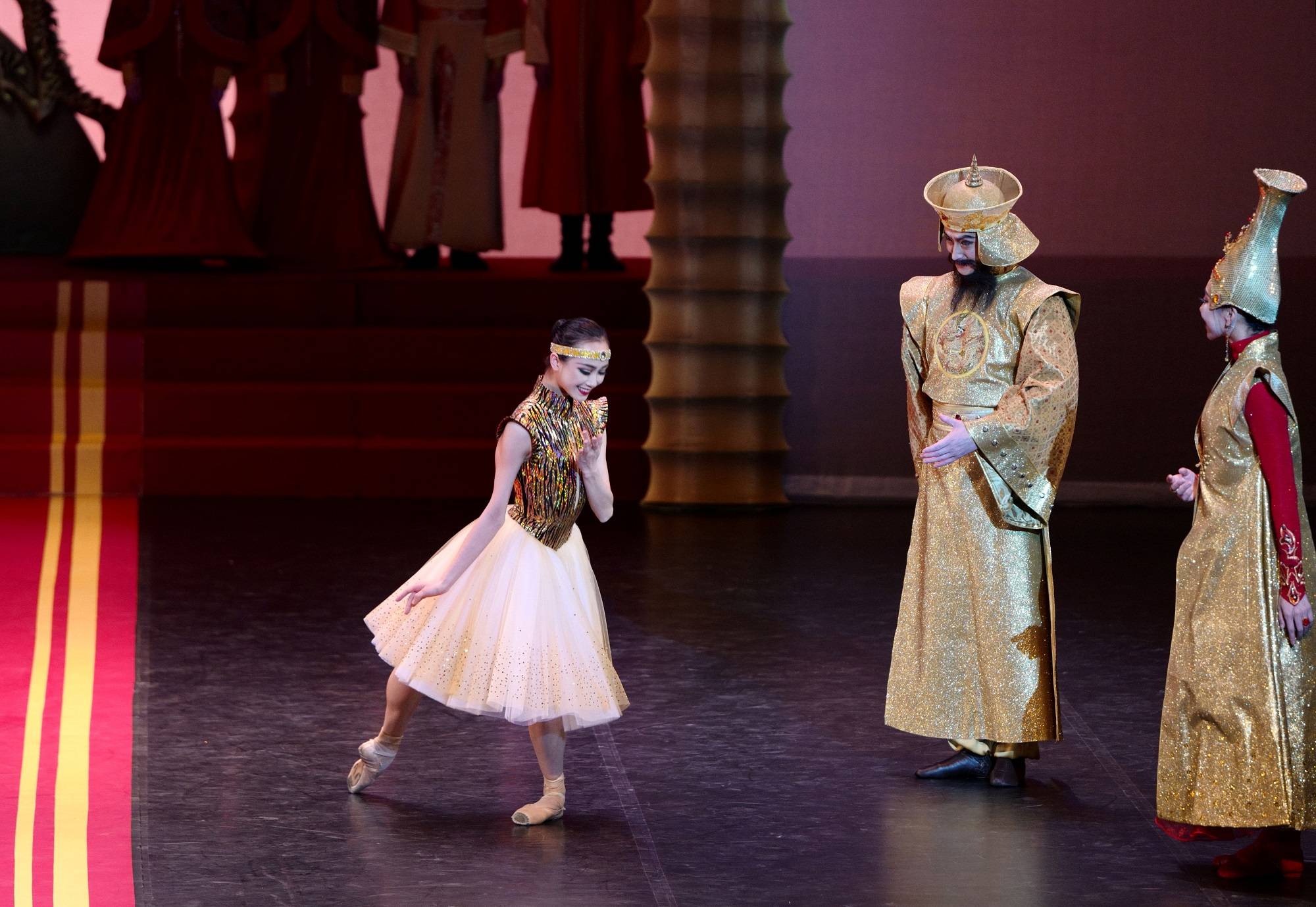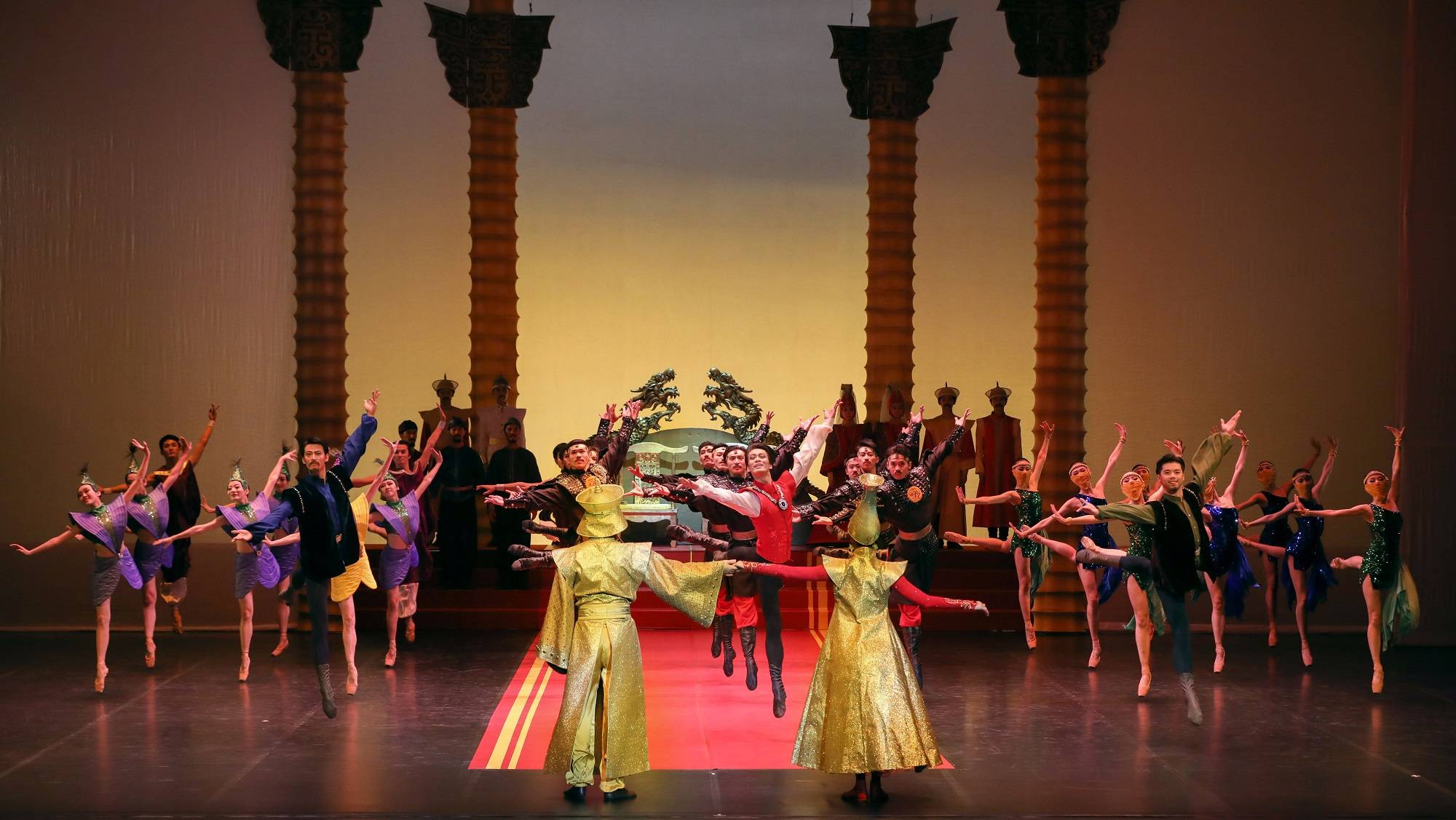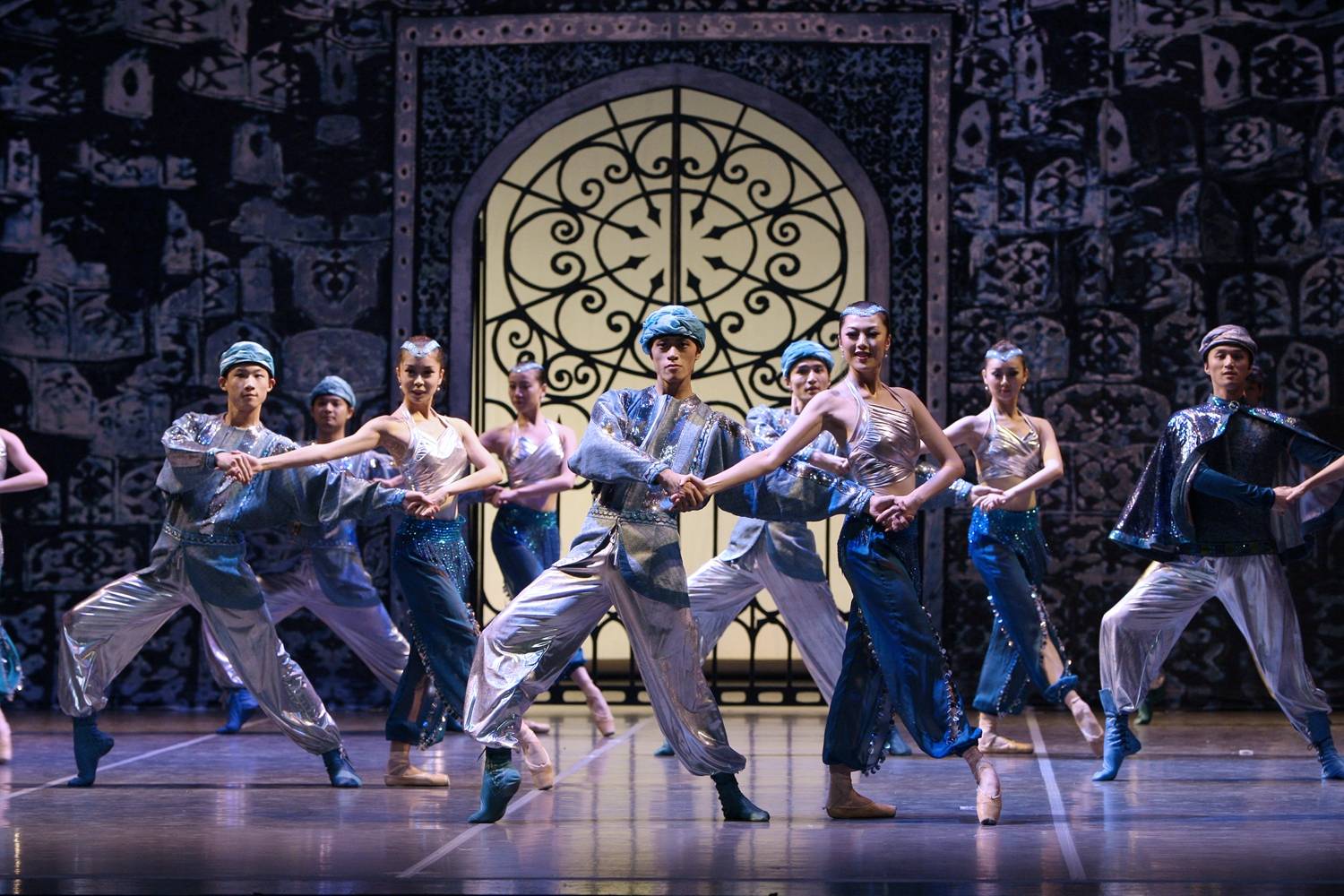
Shanghai Ballet: The Last Mission of Marco Polo
Venue:
Shanghai International Dance Center Grand Theater
1650 Hongqiao Road Changning Shanghai
Date:
2/9/2018
This ticket is only available as a paper ticket

Shanghai Ballet: The Last Mission of Marco Polo
2/9/2018
Shanghai International Dance Center Grand Theater
1650 Hongqiao Road Changning Shanghai
¥180 - ¥680
Paper ticket
Event details
"What motivated me about the Marco Polo ballet creation for the Shanghai National Ballet is the scope of the adventure in which I was being invited to participate: To discover a new culture, a little bit like Marco Polo himself when he journeyed to the Orient a few centuries ago to become acquainted with the habits and customs of its people."
-José Carlos Martínez

Act I Summer Palace in Shangdu (Shangdu: the capital of Yuan Dynasty, now Beijing)
In the year of 1292, when Emperor Kublai Khan reigned. The Mongolian king is ruling Persia. When his queen died, he sent three shrewd, strong barons to report the news to Emperor Kublai Khan in the hope that a princess from the dead queen's family would be selected for the new queen. Emperor Kublai Khan accepts this request and decides to give the most beautiful seventeen-year-old Princess Cogatra to him to marry. At the same time, Marco Polo is reporting to Emperor Kublai Khan about the voyage-mission to East India that he has just completed for him. Also, the emperor listens to the anecdotes that Marco Polo has acquired while he was in the foreign countries. With the plea made by the three barons, Emperor Kublai Khan decides to let Marco Polo, Marco's father and Marco's uncle escort Princess Cogatra to Persia by sea as his last mission, after which Marco Polo and his family will be free to go back home – Venice.
In the year of 1292, when Emperor Kublai Khan reigned. The Mongolian king is ruling Persia. When his queen died, he sent three shrewd, strong barons to report the news to Emperor Kublai Khan in the hope that a princess from the dead queen's family would be selected for the new queen. Emperor Kublai Khan accepts this request and decides to give the most beautiful seventeen-year-old Princess Cogatra to him to marry. At the same time, Marco Polo is reporting to Emperor Kublai Khan about the voyage-mission to East India that he has just completed for him. Also, the emperor listens to the anecdotes that Marco Polo has acquired while he was in the foreign countries. With the plea made by the three barons, Emperor Kublai Khan decides to let Marco Polo, Marco's father and Marco's uncle escort Princess Cogatra to Persia by sea as his last mission, after which Marco Polo and his family will be free to go back home – Venice.

Act II Java
In the year of 1294, the ships used to escort Princess Cogatra set off for Persia from one port on China's southeast coast. The sailors and soldiers are seriously injured; some cannot survive the disaster; some become fragile and fatigued. The princess appears so weak that she can hardly stand up. When a messenger comes to report that land has come into view, Marco orders to pull into shore. Marco holds the faint princess and carries her onto the island Java. Tents are put up by Marco and his soldiers to defend themselves from the native man-eating tribes. Princess is in a daze, but at the sight of Marco, she is touched by his bravery and gentleness, while Marco has already been extremely attracted to this beautiful and talented princess. But both understand from their hearts that for the sake of loyalty to Emperor Kublai Khan, they have no right to pursue this impossible love. In this isolated island, dangers and diseases seem to exist everywhere, and the only way to express their feelings for each other is in their dreams... However, even pleasant dreams are turned into a nightmare by a fierce unicorn. Cruel and heavy fighting awaits them... Thousands of warriors die in the battle. The monster has finally been defeated, but Marco is barely able to walk, with the help of his dream girl, Marco leads his people while they continue their journey.

Act III Palace in Persia
Two years later. Having gone through all kinds of hardships and difficulties, Marco Polo and his men finally arrive at their destination - the palace of the Persian king. It occurs to the young Princess Cogatra that she will encounter something even more frightening than the unicorn – separation from Marco. In spite of the hardships along the way, she was happy because of Marco, her lover in her dreams, accompanied her, guarded her and went everywhere with her. Now Marco is leaving, which means permanent separation for them. She feels so depressed at the thought of their parting that the idea of escaping begins to germinate in her mind again. Preparing for his wedding ceremony, the Persian king comes to the princess directly and salutes her which ends her romantic fantasy. The Persian king is holding a big banquet. The palace is filled with singing, dancing and cheering. Marco and the princess put on an air of cheerfulness. Wearing forced smiles, they bid farewell to each other, their hearts dance in the same way: a dream to live…
In the year of 1294, the ships used to escort Princess Cogatra set off for Persia from one port on China's southeast coast. The sailors and soldiers are seriously injured; some cannot survive the disaster; some become fragile and fatigued. The princess appears so weak that she can hardly stand up. When a messenger comes to report that land has come into view, Marco orders to pull into shore. Marco holds the faint princess and carries her onto the island Java. Tents are put up by Marco and his soldiers to defend themselves from the native man-eating tribes. Princess is in a daze, but at the sight of Marco, she is touched by his bravery and gentleness, while Marco has already been extremely attracted to this beautiful and talented princess. But both understand from their hearts that for the sake of loyalty to Emperor Kublai Khan, they have no right to pursue this impossible love. In this isolated island, dangers and diseases seem to exist everywhere, and the only way to express their feelings for each other is in their dreams... However, even pleasant dreams are turned into a nightmare by a fierce unicorn. Cruel and heavy fighting awaits them... Thousands of warriors die in the battle. The monster has finally been defeated, but Marco is barely able to walk, with the help of his dream girl, Marco leads his people while they continue their journey.

Act III Palace in Persia
Two years later. Having gone through all kinds of hardships and difficulties, Marco Polo and his men finally arrive at their destination - the palace of the Persian king. It occurs to the young Princess Cogatra that she will encounter something even more frightening than the unicorn – separation from Marco. In spite of the hardships along the way, she was happy because of Marco, her lover in her dreams, accompanied her, guarded her and went everywhere with her. Now Marco is leaving, which means permanent separation for them. She feels so depressed at the thought of their parting that the idea of escaping begins to germinate in her mind again. Preparing for his wedding ceremony, the Persian king comes to the princess directly and salutes her which ends her romantic fantasy. The Persian king is holding a big banquet. The palace is filled with singing, dancing and cheering. Marco and the princess put on an air of cheerfulness. Wearing forced smiles, they bid farewell to each other, their hearts dance in the same way: a dream to live…

About Shanghai Ballet
The Shanghai Ballet has formally renamed in 1979 at the base of "The White-haired Girl" performing team. Ballet "The White-haired Girl" won the Gold Medal of the Best Classical Dance Works of the 20th Century in China, which helped establish the Ballet’s predominant position in ballet circle in China.
Since its founding, many young dancers of the company have won total of 39 medals in various international dance competitions. The Shanghai Ballet is active in cooperation and cultural exchange with the artists and companies both abroad and at home. The company not only tours nationwide but also has visited many countries and regions, including the U.S.A., U.K, Canada, France, Spain, Netherlands, Norway, Australia, New Zealand, Japan, Korea, Indonesia, Singapore, Thailand, Finland, Hong Kong, Macao and Taiwan, etc.
The Shanghai Ballet has formally renamed in 1979 at the base of "The White-haired Girl" performing team. Ballet "The White-haired Girl" won the Gold Medal of the Best Classical Dance Works of the 20th Century in China, which helped establish the Ballet’s predominant position in ballet circle in China.
Since its founding, many young dancers of the company have won total of 39 medals in various international dance competitions. The Shanghai Ballet is active in cooperation and cultural exchange with the artists and companies both abroad and at home. The company not only tours nationwide but also has visited many countries and regions, including the U.S.A., U.K, Canada, France, Spain, Netherlands, Norway, Australia, New Zealand, Japan, Korea, Indonesia, Singapore, Thailand, Finland, Hong Kong, Macao and Taiwan, etc.
Conductor: Zhang Chenjie
Accompaniment: Shanghai Opera House Orchestra
Choreography: José Carlos Martínez
Music: Daniel Walker
Costumes: Pierre Cardin
Set design: Pierre Cardin
Lighting design: Marc Anrochte
Staging: José Carlos Martínez
Book: Fang Fang and Sylvie Zhang adapted from The Travels of Marco Polo
Music: Daniel Walker
Costumes: Pierre Cardin
Set design: Pierre Cardin
Lighting design: Marc Anrochte
Staging: José Carlos Martínez
Book: Fang Fang and Sylvie Zhang adapted from The Travels of Marco Polo
Notice
Date: Friday, 9th Feb 2018 @ 19:30
Children under 1.2m are not allowed to enter inside.
ALL ATTENDEES NEED A TICKET.

Follow our WeChat for event news, deals, gossip and more!
Book Now
Shanghai Ballet: The Last Mission of Marco Polo
Venue:
Shanghai International Dance Center Grand Theater
1650 Hongqiao Road Changning Shanghai
Date:
2/9/2018
This ticket is only available as a paper ticket
© 247tickets 2020 沪ICP备19024898号-2

 Add us on WeChat to speak to our friendly customer service team! ID: Tickets247Tickets
Add us on WeChat to speak to our friendly customer service team! ID: Tickets247Tickets